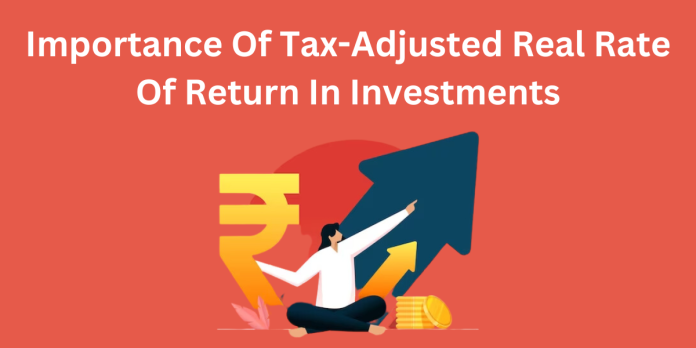When you’re making investment decisions, don’t just look at the headline return. To really secure your financial future and grow your wealth, you need to consider the tax-adjusted real rate of return.
Inflation is like a monster that eats away at your investment gains. Over time, the rising cost of living makes your money buy less. So, if your investments don’t grow faster than inflation, the real value of your wealth will shrink.
To avoid this, you need to aim for a rate of return that covers your investment expenses and beats inflation. This will protect the true value of your investments and keep your purchasing power intact.
But inflation isn’t the only beast you need to worry about. Taxes can also take a big bite out of your investment returns. Different tax brackets have different rates, so it’s important to understand how these rates will affect your returns.
To get a clear picture of how much money you’ll actually make after taxes, you need to calculate your tax-adjusted real rate of return.
Here’s a table that shows the minimum rate of return you need to preserve your invested capital, based on your tax bracket (excluding any surcharges that might apply to incomes exceeding Rs. 50,00,000):
It’s important to understand these factors before you make any investment decisions. Knowing the rate of return you need to maintain the real value of your investments and the after-tax income you’ll receive will help you choose the right investment strategies for your needs.
Also, keeping a close eye on your tax-adjusted real rate of return can help you optimize your investments. By minimizing the impact of taxes on your returns, you can boost your overall financial performance. This means more money in your pocket, and potentially a faster path to reaching your financial goals.
| New Tax Brackets | ||||||
| Amount (in Lakhs) | Up to 3 Lakhs | 3 Lakhs to 7.5 Lakhs | 7.5 Lakhs to 10 Lakhs | 10 Lakhs to 12.5 Lakhs | 12.5 Lakhs to 15 Lakhs | above 15 Lakhs |
| Tax | Nil | 5.00% | 10.00% | 15.00% | 20.00% | 25.00% |
| Effective Tax Rate | Nil | 5.20% | 10.40% | 15.60% | 20.80% | 26.00% |
| Current Inflation Rate | 5.02% | |||||
| Cess | Nil | 4.00% | 4.00% | 4.00% | 4.00% | 4.00% |
| Minimum Required Rate of Return | 5.02% | 5.30% | 5.60% | 5.95% | 6.34% | 6.78% |
Read: All you Need to Know about Inflation
How to calculate:
Minimum Required Rate of Return = Inflation / (1 – Effective Tax Rate)
Let’s consider that we fall in the 3rd tax bracket of Rs. 7.5 Lakh to Rs. 10 Lakhs where the Tax rate is 10% and Cess 4%. So effective tax rate will be,
Effective Tax Rate = Tax Rate * (1 + Cess)
Effective Tax Rate = 10% * (1 + 4%)
Effective Tax Rate = 10.40%
Now to calculate Minimum Required Rate of Returns we already have formula,
Minimum Required Rate of Return = Inflation / (1 – Effective Tax Rate)
Minimum Required Rate of Return = 5.02% / (1 – 10.40%)
Minimum Required Rate of Return = 5.60%
So, as per calculation, we must earn a return more than 5.60% to beat inflation and tax payments otherwise we end up eroding our wealth.
So, don’t just focus on the headline return when you’re making investment decisions. Take the time to calculate your tax-adjusted real rate of return. It’s an important step in making informed investment choices and securing your financial future.


